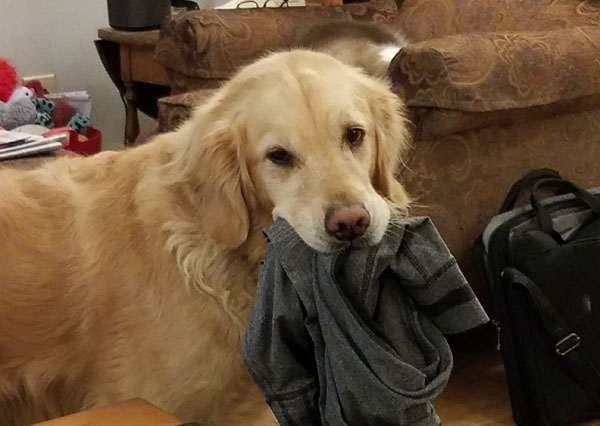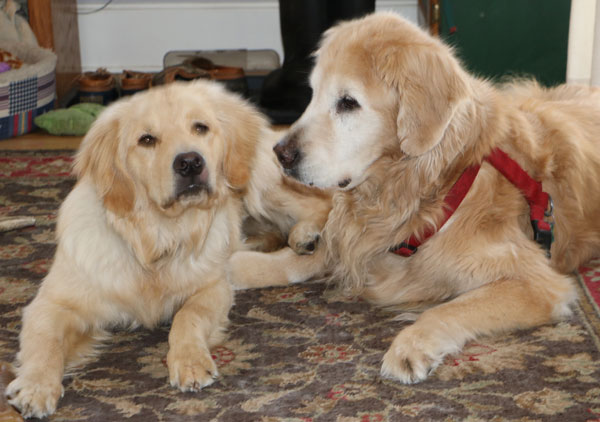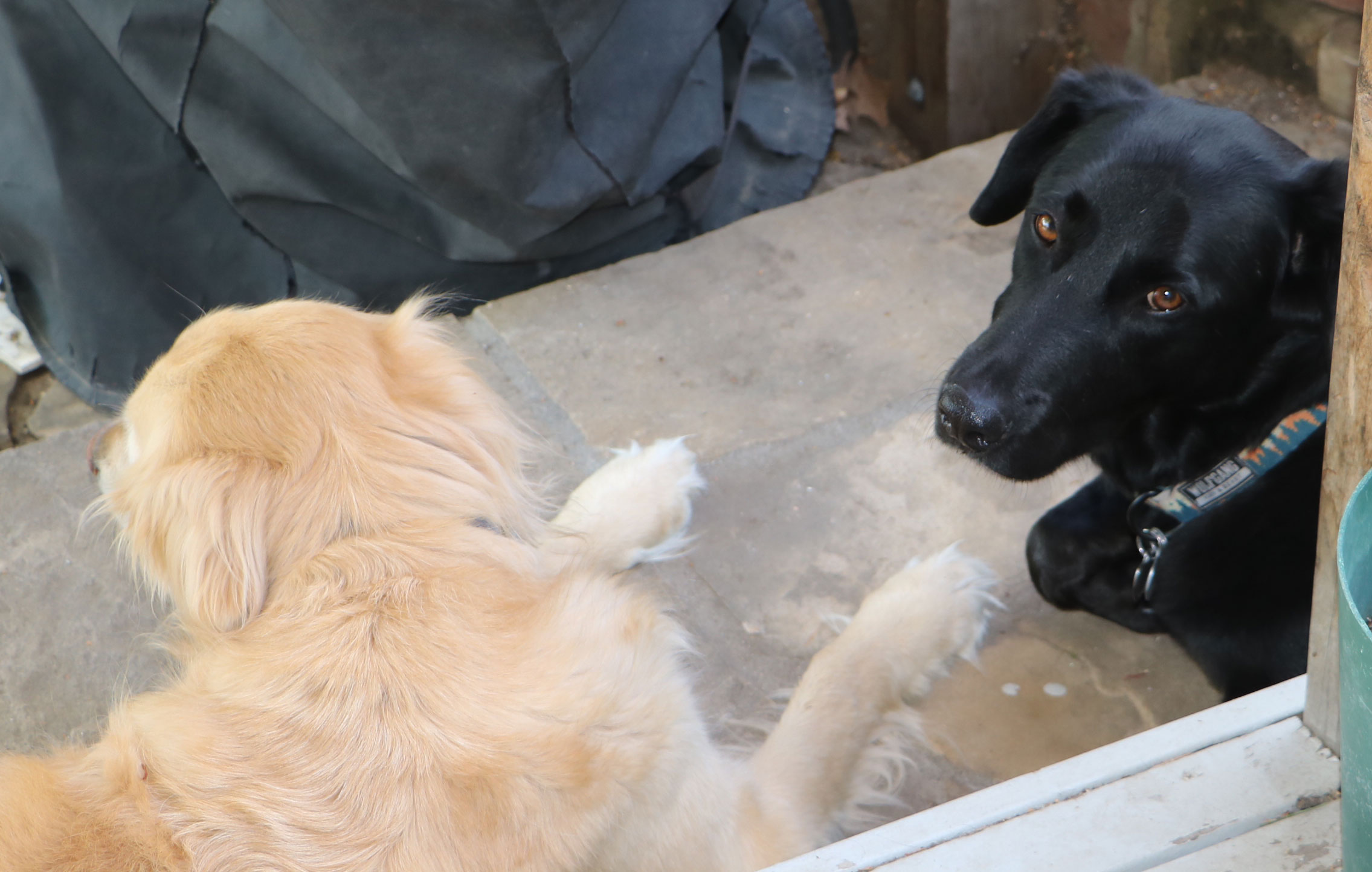Changed door lock and hinges 03-04-21

Today I took the door off the closet under the stairs and replaced the brass hinges with nickel ones. I also replaced the brass door handle set with a nickel set.
This is a solid core oak door. And I’m starting to get too old and puny for jacking a 40-pound door around, but I got it rehung. Puff, pant, cuss.
When most of This House was completed, people (and Judy and I) preferred the shiny, almost gold colored, brass door hardware. Then, as we were working on the last addition, brushed nickel – kind of a dull silver – began taking over the marker.
And, in the way of shiny objects, we decided the nickel was so much more elegant than the polished brass. And, so began the process of swapping out door handles and hinges. Here we are 12 years later, still swapping.
And now I’m told brass is making a comeback. Sigh. But I think the new in thing is solid brass, which isn’t quite as shiny as the old brass coated stuff we have, and probably a lot more expensive. I am going to doggedly stay with the nickel.
Building materials ain’t what they used to be
Mountain Man Mike sat at our kitchen table looking over the plans.
MMM: “We’re going to need 14 Glulams, fifteen OSB sheets, but I highly recommend five-eighths plywood for the roof. I don’t like walking on OSB, and we’ll need eight 14-foot TJIs.”
ME: “Huh? I did understand the word plywood.”
There are so many building material options today. There’s steel studs and plastic (PVC) boards. There’s also all manner of non-concretey things made with concrete, such as concrete roof slates, concrete shake shingles, and concrete siding as well as regular old -concrete stamped and colored to look like brick or stone.
Then there are materials made by grinding things up and gluing them back together, which has led to the term engineered building materials. God gave us trees. We engineered their carcasses into something else.
Plumbing – you won’t find this stuff in nature
Nowadays you can plumb to your heart’s content with materials that exist nowhere in nature. These include polyvinyl chloride (PVC) and the vaguely threatening sounding Acrylonitrile Butadiene Styrene, which is usually described by its friendly sounding initials, A B and S. And there’s that handy new plumbing material cross-linked polyethylene, or PEX, which has me puzzling how they get polyethylene to cross link, whatever cross linking is.
Not everything new is better
If, for example, you live in a house built or remodeled between the mid-60s and the early 70s, it may have aluminum wiring instead of copper.
Aluminum was all the rage because it is cheaper and lighter weight than copper, and those big overhead powerlines are aluminum. But, over time, it became apparent aluminum wiring of the time didn’t play well with connected devices such as outlets and switches, and had a nasty tendency to overheat and cause its surroundings to burst into flame.
Glulam (glued laminated timber)
Glulam is made up of a number of layers of dimensioned timber, such as 2 X 4s or 2 X 6s glued together to make a much bigger beam. Glulam construction allows for wood to safely support weight over spans that are way beyond that of wood alone, and it’s not new.
In 1943, Howard Hughes used glulams that spanned 120 feet and reached seven stories above the floor of the hangers he built for the construction of his Spruce Goose airplane.
LVL (laminated veneer lumber)
Since LVL is made up of multiple layers of thin wood glued together it provides that extra strength and resistance to warping and bending that Glulam does. LVL just doesn’t look as pretty, so, in the case of This House, we used a lot of LVL, but it’s all covered up.
TJI (Trus Joist I-Joist)
TJI is a Weyerhaeuser trademarked product. Everything about a TJI is made up, with LVL type wood making up the top and bottom flanges (fancy word for the wider parts.) The middle “webbing” is oriented strand board. As with the other engineered woods we used, TJIs hold their shape and resist twisting and bending better than “real” wood, and, I was tickled to learn TJIs are infinitely lighter than the same size dimensioned lumber.
OSB (oriented strand board)
Oriented strand board are those crazed looking product you see sheathing walls and roofs in any new subdivision you drive through.
OSB is layered like plywood, but the layers are created by shredding the wood into short strips, which are sifted and aligned with other strips. I found it fascinating to think that the largest OSB production facilities can enough sheets in one day to cover about 23 acres.
The ancient history of plywood
I was pretty excited that I had at least heard the word plywood when we began planning the Final Phase. But my knowledge is not special. Plywood is everywhere. Even in this day of OSB and other more modern engineered house coverings, plywood is still used in most instances for the first layer of flooring called the subfloor
Traces of glued up sheets of wood, , have been found in Egyptian tombs. And the Chinese were using glued up wood products in their furniture making at least a thousand years ago.
The first major modern plywood in the U.S. is widely regarded to have been an exhibit at the 1905, Portland, Oregon World’s Fair
Two by four?
Of course wood is still being used as wood, particularly in framing houses, and even bigger buildings. I recently watched a huge three-story apartment complex go up, all framed with wood.
Remodeling rest period. Sometimes the only thing a DIY remodeler can do is take a break.
Spring 2020, two more days until summer.
Check out the full story of the house that won’t get finished
There is still so much to do to finish This House. Some of it, like the original bathroom, is work to update what was done long ago. That’s been motivation to take a break from all work on the house because I really hate having to redo something I have already done.
But, after 30 years, that toilet has gotten moody about when it chooses to flush, and the bathtub is, well…let’s just say neither Judy nor I have had a bath in years. Not to worry, we have another shower.

It’s not like I really get to lie around. I just like to pose like I do. Spring and early summer are, for us on our suburban homestead, like any other agricultural enterprise. There’s vegies to plant and weed and flower beds to weed and plant, and, we always have a June camping trip.
As neighbor Nick said, “If I put in as much time getting that trailer ready to go, I’d want to be gone for a month. We were gone four days, after about a week’s worth of prep work.
By July, the gardens should be on their own and the good plants should be starting to overwhelm the weeds. It will be time to get back to work on This House. Probably the first thing to do will be to remove all the furniture from the three carpeted rooms (not looking forward to that) and get someone to lay some new carpet. The old carpet is grosser than the bathtub. More about projects to come.
My writer history

I have been serious about writing for quite a while to say the least. I was staying after school in first grade to finish writing lessons, not because they were bad, but because I had things to say.
In fact, Miss Crone (I still think that’s a great name for a veteran first grade teacher.) told a friend’s mom that I showed signs of budding genius. Sad when the highlight of your education happens in first grade.
It’s not in my nature to glorify, or lament, the past, but I owe quite a bit of who I am and what I do as a writer to the newspaper business.
My introduction into the world of work was a sixth- and seventh-grade Indianapolis Star paper route. My route was in a different neighborhood; so I would arise each morning and ride my bike loaded with papers a half mile or so before I even made my first delivery. Good work ethic building, especially at twenty degrees and snowing.
A number of years later, my introduction to the world of published writing came with a letter to the editor of the Lafayette Journal and Courier. I used that letter as the gateway to what became paid assignments from the J&C and the Purdue Exponent.
I will detail the rest of my writing career, at least as it exists so far, in the very near future.
More running writer:
Why running writer

Running writer is simply an alliterative thing that popped into my head. Truthfully, though, sometimes I run. Sometimes I write. I write more, a lot more, than I run, but writing runner sounds wrong.
And, speaking of words that work better together, I also have some thoughts to share on lessons that wordsmithing and poetry can teach us that can improve almost all writing, sometimes even writing of the driest technical nature.
Not to worry. No comments here about running.
More running writer:


















